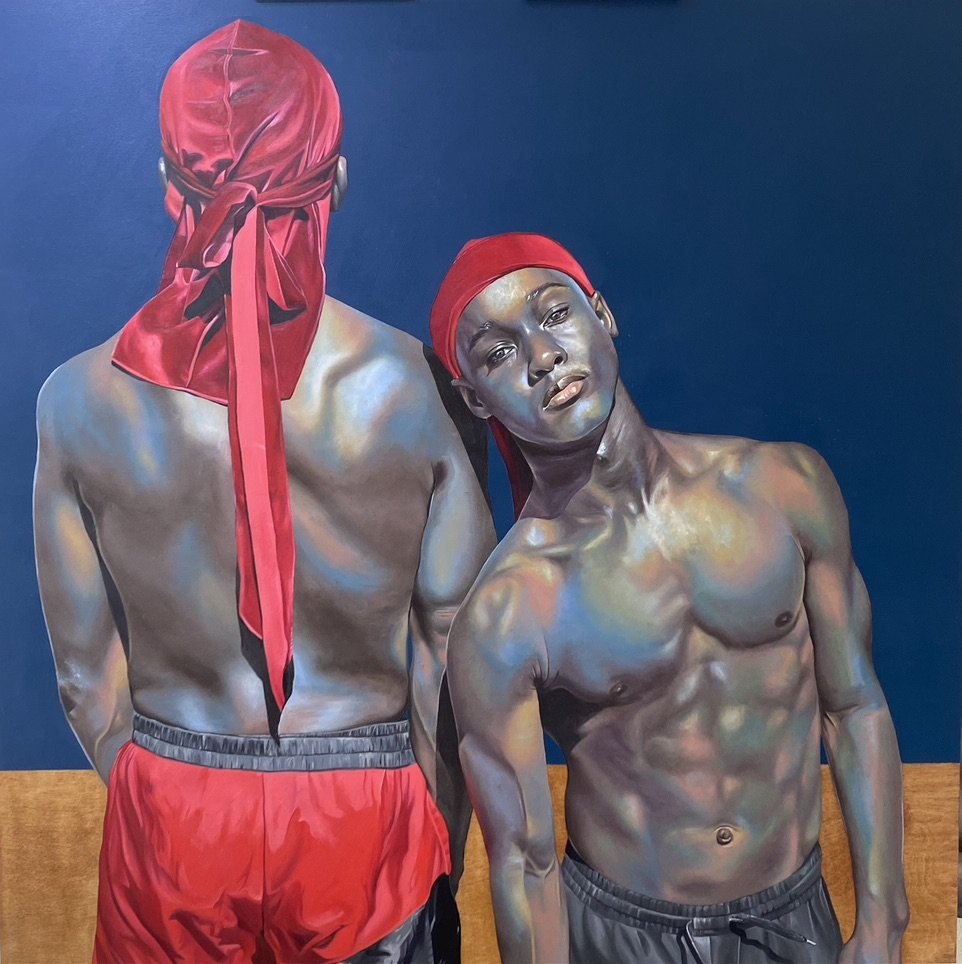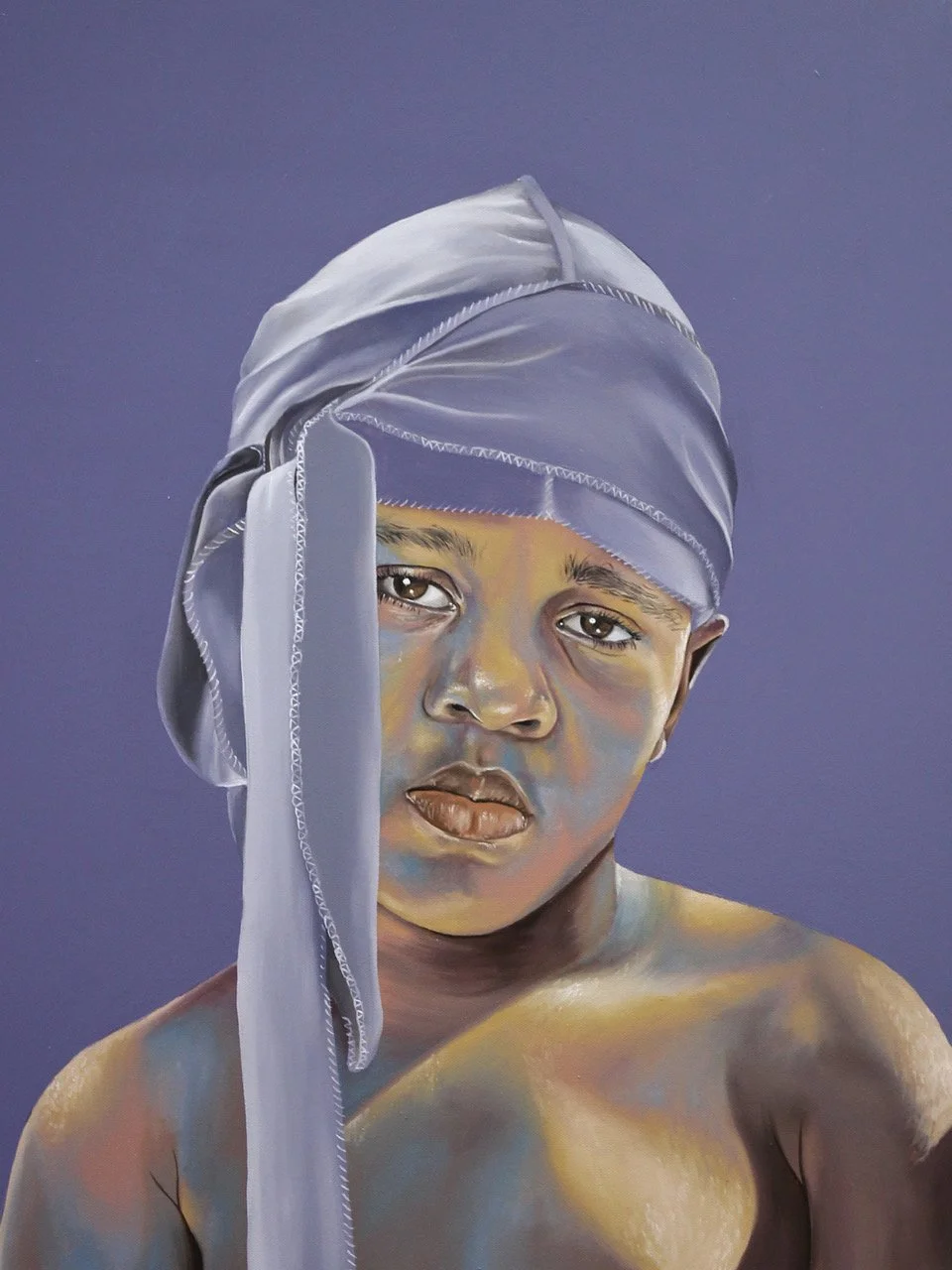Robert Peterson: Ten Years to the Top
Robert Peterson’s raw and spontaneous abstract portraits are in high demand from art collectors and fans worldwide, including professional athletes Darrelle Revis, Amare Stoudemire, Kevin Durant, Carlos Boozer and Floyd Mayweather. He counts among his collectors celebrities like platinum-selling recording artist and entrepreneur Sean “Diddy” Combs, Lil Wayne, Swizz Beatz, Alicia Keys, Miley Cyrus and many others. His meteoric rise to the upper echelons of the fine art world began humbly, more than a decade ago, in Lawton, Oklahoma.
When Peterson picked up a brush and started painting for the first time ever, it wasn't under the grand illusion of becoming famous. When he purchased a $6 paint set and a $7 canvas, he saw painting as an opportunity for him to create while doing something he enjoyed during his free time away from work.
That humble hobby has become much more to the 41-year-old Peterson. Painting has allowed him to help support his family, achieve international recognition and, just as importantly, tell the real story of Black America.
“If you go to any museum, you see mostly work that highlights the good side, the good life — and tells the story of Europeans and white people,” Peterson says. “If you happen to see a Black person in one of those paintings, they are usually like the help. I feel like we are so much more than help. It’s time to change the narrative.”
Peterson’s work took off during a moment of intense social upheaval, a time which also saw people become increasingly interested in the works of the Black artist. He said this was brought on by the murder of George Floyd, the rise of the Black Lives Matter movement and the political, social and cultural reckoning taking place around the country.
“I was creating really good work before that,” Peterson says. “But once that little window opened, it was like, ‘There were a lot of you that were ignoring me. Now I’m about to show you what you missed out on and what you need to be paying attention to.’ I think there were a lot of artists, like myself, who took advantage of that moment in time to say, ‘Watch, let me show you something.’”
When Peterson first started to paint, he was also working as a forklift operator at the Goodyear Tire & Rubber Company in Lawton. He would get up at 4:45 a.m. and create his art until 6 a.m., then head to the plant and work a 12-hour shift. After returning home, Peterson would often work another three to four hours on his artwork before finally going to sleep.
In 2014, Peterson was injured while working at the plant and had to have his hip replaced. After rehabilitation, he was put on light duty. “When my light duty ran out and I couldn’t get cleared to go back to work, everything worked out together,” Peterson says. “My work started selling more and I no longer needed this.”
Although Peterson was able to quit his job at Goodyear, it wasn’t a smooth journey: It was still a struggle because there wasn’t anything to fall back on when his art wasn’t selling. During those times, the family relied on the paycheck of Peterson’s wife, Marina, a hairstylist who currently runs her own salon.
Despite downturns and struggles, Peterson never stopped believing in himself. “Since picking up the brush that first time and getting a sale, I have felt like this is what God has wanted me to do. There’s not been a moment in time where I felt like this isn’t what God has wanted me to do.”
The first official work of art Peterson sold was a portrait of Andy Warhol. It earned him a $750 payday in September of 2012. The same buyer also purchased Peterson’s next project, a portrait of Jean-Michel Basquiat. It went for $750 as well. With that $1,500, Peterson took his wife on a vacation. “I did not have to work driving a forklift for 12 hours and I’m sitting on vacation on the beach,” he says. “I can do this. I haven’t looked back since.”
Peterson’s 10th anniversary as a painter is in July. He says it has taken him this long to develop a style that is all his own, one he describes as “spontaneous realism; portraits that tell stories of people of color.”
His process begins with a general idea, which comes from a story he believes needs to be told. He then commissions photographers to shoot the image in his mind, in black and white. Then, he works from the reference photos. Peterson said that by rendering the photos black and whites, it allows him to make the subject matter his own, which he transfers onto the canvas.
“Typically, I will go through and find out which one I love,” Peterson says. “I will sketch it out on my canvas. From there, it’s just a matter of letting the canvas speak. I never really go in with an idea of how the colors are going to work. I just let it do what it does, and it has evolved into the style that you see now. You work it until it says it’s done. If you listen carefully, the canvas will tell you.”
It takes Peterson somewhere between five days and two weeks to complete a painting. While that may seem like a short amount of time for work that can sell for tens of thousands of dollars, Peterson’s point of view is different. “You may see the two weeks and think that’s short, but I am looking at how it took me 10 years to be able to do it in that time,” he says. “It’s not what I’m doing. It’s what I’ve done. I’ve put in a lot of work.”
When Peterson lists the factors that have led him to this point in his career, he starts with his faith, then the support of his wife and family. He also says the belief that art was what he was created and designed to do has sustained him through some of his most turbulent times.
“To be honest and transparent, I think what happened was I was trying to get people to notice me here in town and they weren’t. So, what happened was I just kept creating because it was something fun to do. At the time I was still working. Then people outside of the state started noticing and celebrities started buying. By March of 2013, I was doing my first show in New York City. By the end of that year, people in Lawton were taking notice.”
At first, his work was just paying for itself. He was making enough to buy supplies, and pay for shipping and other expenses. Then it started to get to the point where he could pay bills with it. It wasn’t until 2020 that his career really took off. That’s when he made some crucial decisions regarding his work — after he noticed in 2019 that he personally was outselling the galleries that carried his work.
“In February of 2020, after coming back from the L.A. Art Show, I ended up pulling all my work from the galleries and canceling all my contracts, and became an independent artist,” Peterson says. “I began controlling every part of my business.” One of the contracts Peterson canceled was with JRB Art at The Elms — the Oklahoma City gallery that gave him his first solo showing in 2015, which he describes as an opportunity that he’ll always be grateful for.
The value and demand for Peterson’s work have increased dramatically since then. In October, his painting “We’re Gonna Be Kings” sold for $56,700 at the Phillips auction house in New York City, at the time a personal record for the highest price ever paid for one of his works. That record was soon eclipsed when he sold a painting for $60,000.
Excluding prints, Peterson has sold a couple of thousand pieces of work in the past decade, a few hundred of which have been works on canvas. The list of those who collect or have purchased a Robert Peterson painting include a who’s who of celebrities, as well as private collectors across the country — in fact, that list includes three of the top five individual collections in the United States. A decade ago, that’s something he would have never imagined.
“When I hear people say they have a Robert Peterson or ‘We are going to go to this gallery because it has a new Robert Peterson,’ it still feels crazy. I’ve sold way more work under $1,000 than I have over $1,000,” Peterson says. “But it took all of that to get to where I am now.”




